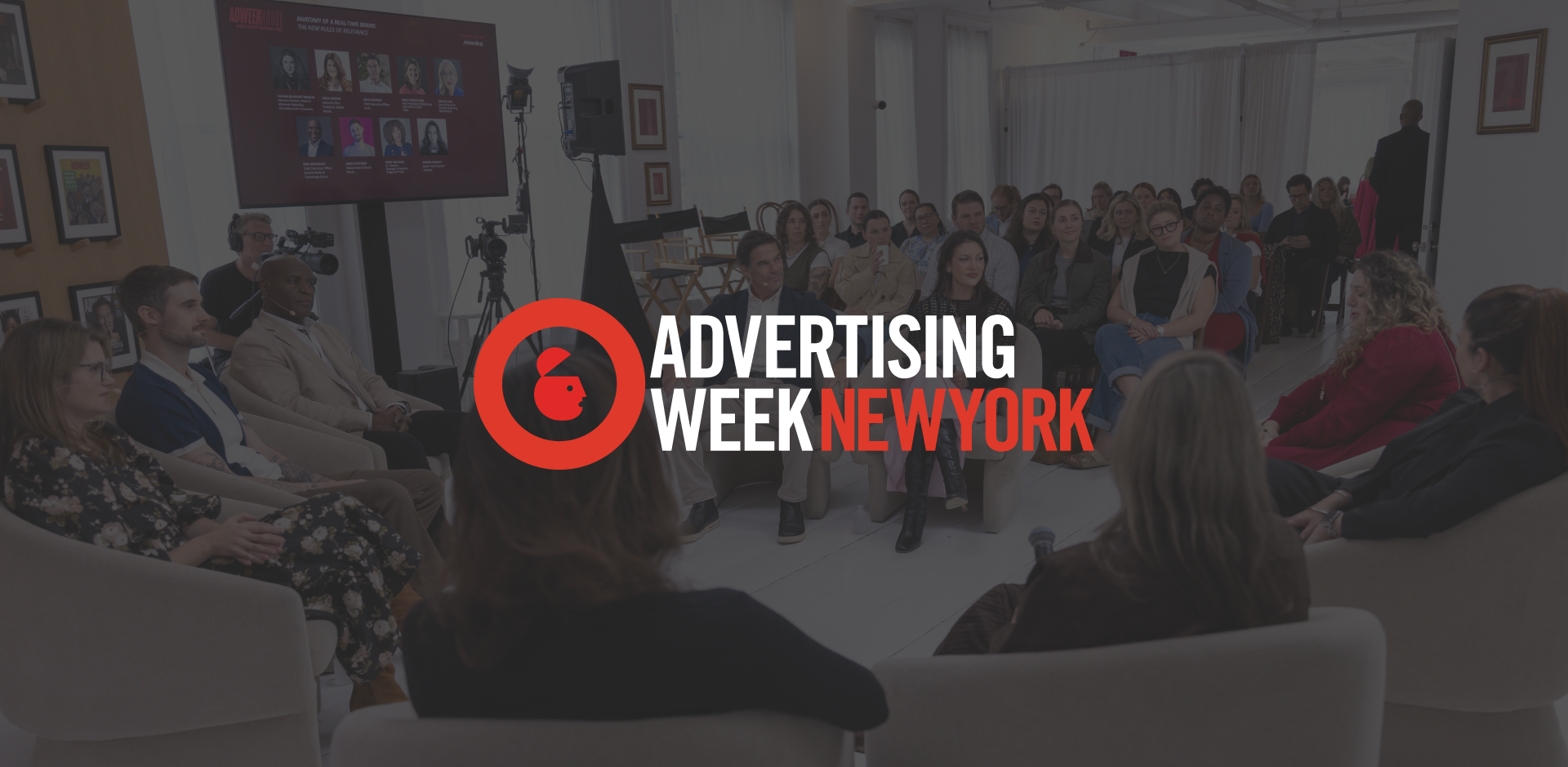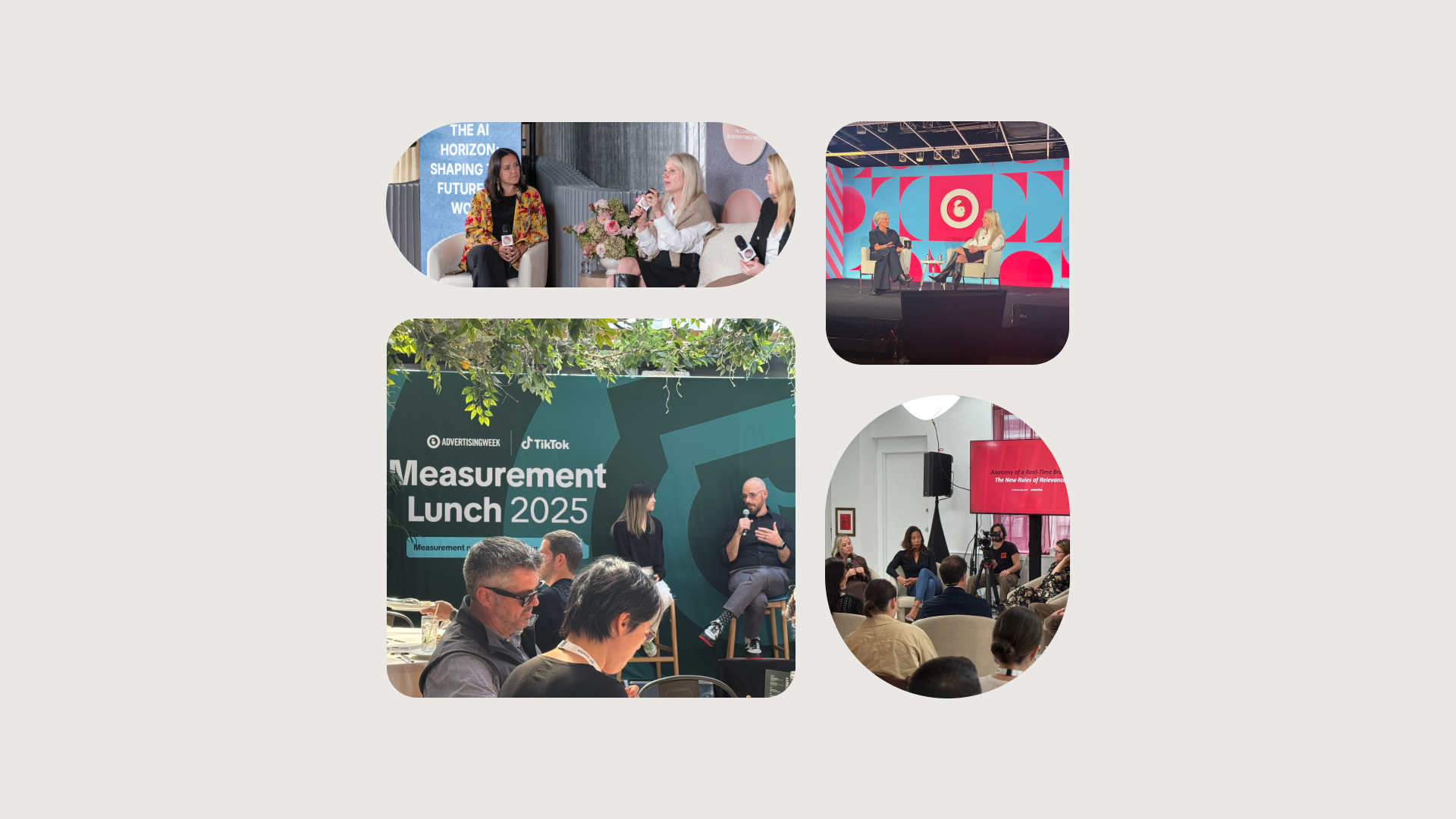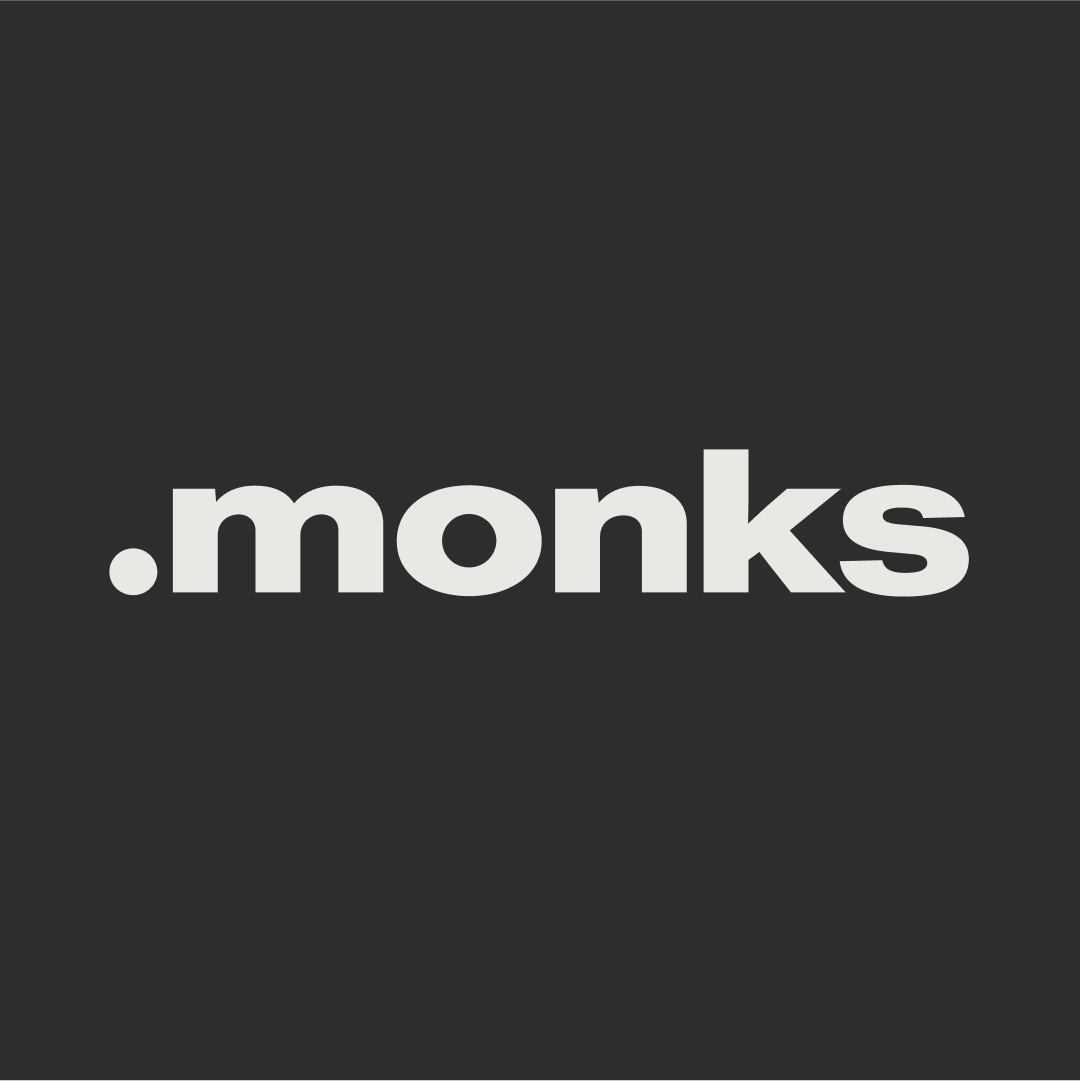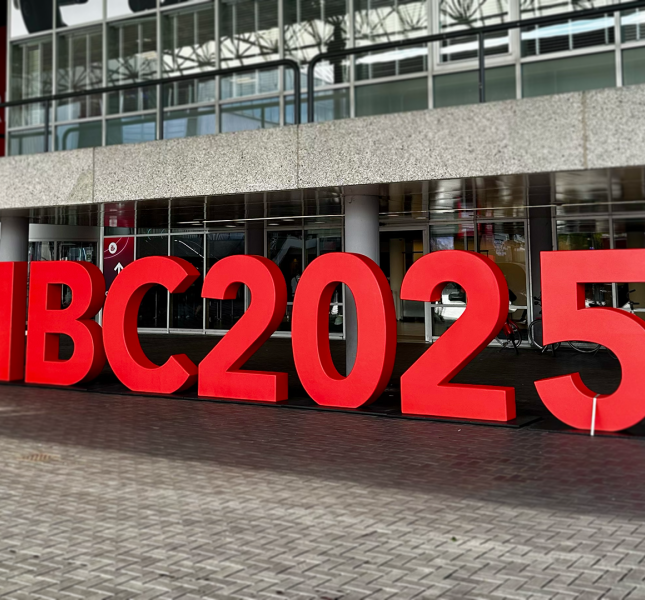The Takeaways from Advertising Week NY That Demand Action Now

In an industry defined by rapid change, the conversations at Advertising Week NY provided a clear and urgent playbook for marketers. This recap moves beyond the theoretical buzz to offer a practical blueprint for how to re-architect your marketing model for a real-time, AI-powered world. Here’s what’s covered:
- Re-engineering the creative model is no longer optional. Brands must move from a linear supply chain to a fluid, interconnected ecosystem that leverages AI for speed, scale and personalization.
- ROI must be framed in the language of business value. The pressure is on to move beyond last-touch attribution and embrace holistic measurement models that connect marketing efforts directly to pipeline and revenue.
- True relevance requires an infrastructure built for speed. Building a real-time brand is less about reacting to trends and more about proactively creating an agile system of people, processes and technology that can act on cultural insights immediately.
Another Advertising Week NY has come and gone, leaving the industry to digest a whirlwind of panels, predictions and prognostications. But beneath the familiar buzz around AI, measurement and retail media, a clearer, more urgent narrative emerged.
This year, from the sessions we hosted to the conversations we joined, a clear theme of pragmatism took center stage. Conversations moved beyond the theoretical promise of new technologies to confront the practical challenges of execution: how brands can fundamentally re-architect their organizations to make real-time, AI-powered marketing a reality. The week’s discussions provided a practical blueprint for modern marketing, one centered on reimagining creative models, redefining value and building true organizational agility.
The AI mandate calls for a re-engineering of the creative supply chain.
For years, brands have operated on a linear creative supply chain: brief, ideate, produce, distribute. The consensus from Advertising Week NY is that this model is no longer fit for purpose. In an AI-powered world, the goal now is to transform the old assembly line into a fluid, interconnected ecosystem. This requires a foundational shift in thinking, moving away from rigid processes and toward agile, tech-enabled partnerships that can unify disparate teams and technologies under a single, strategic vision.
This pivot is precisely the kind of transformation Monks is undergoing with clients like General Motors. During the “Under the Hood on the New Marketing Creative Model” session, our Global Chief Client Officer, Deborah Heslip, spoke alongside General Motors Executive Director of Global Marketing Excellence, Molly Peck, to discuss the new strategies and partnerships required to thrive in this new era. The ultimate aim is a powerhouse that moves at the speed of the market. “It’s bringing everything together... what does marketing look like in the 21st century as a brand?” Peck said of the early stages of General Motors’ transformation.
This sentiment was echoed in “The AI Horizon: Shaping the Future of Work” panel at the Female Quotient Lounge, which explored how emerging AI applications will revolutionize customer experiences. Unlocking this technological promise demands a profound cultural shift. For marketing teams wondering where to begin, the answer lies in education and experimentation. The first practical step is creating a culture of learning through consistent internal education—like weekly sessions on the latest tools—and empowering teams to start asking creative questions. Fostering the curiosity to ask, “I wonder if AI could do this?” one way to kick off such initiatives. This can be as simple as using generative AI for low-risk creative tasks like brainstorming copy variations, creating image storyboards or generating mood boards to test the waters and build confidence.
Brands must move from vanity metrics to clear business value.
Alongside the push for operational transformation is a renewed, intensified pressure to prove its value. The need to connect marketing efforts to tangible business outcomes has never been greater, and the session “The ROI Revolution: Moving B2B Marketing from Vanity to Value” highlighted a key challenge: traditional attribution models, often built for B2C, simply miss the mark in today's complex buying journeys, which involve multiple stakeholders and touchpoints over extended periods.
The solution lies in moving beyond vanity metrics and last-touch attribution. Marketers must learn to speak the language of the C-suite. As Jae Oh, Director of Product Management at LinkedIn, noted, sales team doesn’t care about CPCs; they care about pipeline and revenue. “Your job is not to prove that marketing is working. Your job is to make it better.” This means embracing a more holistic view of measurement and getting marketing and sales to the same table, armed with the same data and rowing in the same direction.

This need for a more sophisticated measurement mindset was also the focus of a TikTok Luncheon on media mix modeling (MMM). The session reinforced that in a fragmented media landscape, relying on last-click attribution results in a fundamentally flawed view of media effectiveness. For marketers looking for the catalyst to bring to their CFO, the discussion provided a powerful example: one study found that TikTok captures 23x higher return on ad spend (ROAS) in media mix modeling versus last-click attribution. This is the kind of business-focused data that can justify a pilot project to quantify how much value a company’s current measurement model is leaving on the table, reframing the conversation from marketing metrics to business impact.
The push to operate in real time starts with building speed, strategy and smarter spend.
If AI provides the engine for transformation and ROI provides the map, then real-time agility is the vehicle that drives it forward. Building a real-time brand requires constructing an entire system that allows a brand to be truly relevant in the moments that matter.
The panel “When Imagination Meets Intelligence: Building Real-Time Brands with Data-Driven Precision” explored how to bridge the gap between creative storytelling and media effectiveness by emphasizing a test-and-learn methodology. The key is to design multi-dimensional creative systems that can be adapted and optimized on the fly, implementing real-time feedback loops that fuel both short-term performance and long-term brand growth.
Perhaps no group embodies this fusion of art and science better than today’s creator class. As Ronan O’Mahony, Senior Director of Brand & Advertising at T-Mobile, told our Head of NAMER, James Stephens, in one session, “You get on a phone with one [creator] and they will tell you, ‘What works for me is this, and here's what I see in my results, and here's how I think about that.’” This reality calls for a new collaboration model where creators are treated as strategic partners. Their value extends beyond content creation; they are a live feedback loop. For example, if a creator’s audience is consistently asking for a specific product feature, a real-time brand can use that insight to immediately inform a flash sale, test a limited-edition run or feed the data directly to the product team for the next iteration, turning cultural insights into business action.
Achieving this agility demands a specific organizational infrastructure and mindset, supported by technology. The “Anatomy of a Real-Time Brand” session tackled this topic head-on off-site at Adweek House, where leaders discussed how to equip their teams with the tools, data and—crucially—the risk tolerance needed to act on cultural moments immediately. This focus on proactive strategy was also central to the “Holiday 2025: Winning the Season with Strategy, Speed & Smarter Spend” discussion, where panelists emphasized a forward-looking approach. The goal is to create “seasons defined not by bigger budgets, but by smarter and more inspired marketing,” said Aisuluu Eralieva, AVP Data Driven Experiences & Audience Strategy, Consumer Products, at L’Oreal, ensuring that a brand is actively shaping the conversation.
Advertising Week NY culminated in a clear call to action.
The throughline connecting every major conversation at Advertising Week NY was clear: the modern marketing organization must be built for change. This transformation represents an immediate imperative, built on a holistic culture of innovation that seamlessly integrates AI into creative processes, measures success in terms of business value and operates with the speed and agility of a real-time brand. Advertising Week provided the forum and the focus; now, the work of putting that playbook into action begins.
Related
Thinking
Sharpen your edge in a world that won't wait
Sign up to get email updates with actionable insights, cutting-edge research and proven strategies.
Monks needs the contact information you provide to us to contact you about our products and services. You may unsubscribe from these communications at any time. For information on how to unsubscribe, as well as our privacy practices and commitment to protecting your privacy, please review our Privacy Policy.



